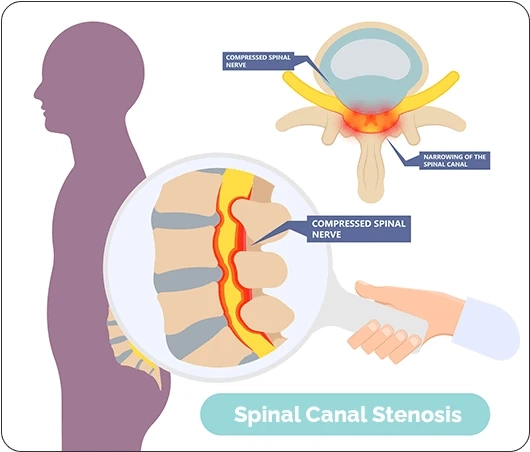Once you start experiencing physical pain in any part of the body, it becomes difficult to perform simple tasks in life. The pain in the body communicates with you and explains that something is wrong inside that needs attention. Ignoring the pain for a long time can result in other health issues, such as anxiety, depression, and poor mobility. One such condition is spinal stenosis, which causes back pain. It can get severe if it is not given proper attention on time. Various non-surgical spinal stenosis treatment options have shown their effectiveness in managing the pain.
Understanding the nature of the disorder and how it develops is first necessary to analyze the pain associated with spinal stenosis.
What is spinal stenosis?
Spinal stenosis, also known as cervical spinal stenosis, is the narrowing of the space in the spine. It exerts pressure on the spinal cords or nerves that travel to the muscles. It affects neck and lower back regions, resulting in symptoms like chronic neck pain, chronic lower back pain, pain while walking or standing, weakness in arms, legs, or feet, numbness or tingling in the arms or legs, cramping, etc.
What causes spinal stenosis?
Generally, it affects people aged 50 and older due to the general aging of the spine. It can also be genetic or caused by specific injuries or medical conditions.
Common causes of spinal stenosis include:
Degenerative changesHerniated discsCongenital conditionsSpinal injuriesThick ligamentsSpinal tumorsBone spurs (Osteoarthritis)Slipped vertebra (Spondylolisthesis)The best non-surgical lumbar spinal stenosis treatments
Unfortunately, there is no cure for this problem. Still, by early detection and knowing the root cause, with the help of non-surgical spinal stenosis treatment, the person can relieve pain and improve existing symptoms. So, how can you fix it without surgery? Here are some non-surgical spinal stenosis treatment options that can help you find relief from the symptoms.
Lifestyle Adjustments
A few small lifestyle changes can make a big difference in how quickly the symptoms of spinal stenosis go away. These include incorporating a regular exercise routine, maintaining the right weight, and eating healthy to enhance one's ability to heal faster from spinal stenosis.
Physical Therapy
It is highly recommended for spinal stenosis patients as the most effective treatment, as it offers various benefits for recovering from the condition naturally. The physiotherapists analyze the symptoms and provide a personalized selection of exercise and stretching routines for the patients. These exercises improve the muscular support of the spine while enhancing mobility.
Chiropractic Care
Just like physical therapy, chiropractic care also helps with pain management. The experts, called chiropractors, perform treatments like spinal manipulations, adjustments, and chiropractic adjustments to help realign the misalignment of the spine.
TENS
It is an acronym for transcutaneous electrical nerve stimulation, a technique that involves applying a low-voltage electrical current to stimulate nerves. It triggers the release of endorphins, the natural chemicals that help reduce pain.
Conclusion
Before going to surgical options, consult with the experts at top healthcare centers, such as ANSSI Wellness, and get information on non-surgical spinal stenosis treatments. The non-surgical treatments offer effective options for managing symptoms and improving the quality of life for many individuals.


